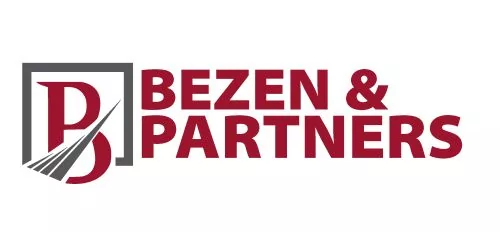The Energy Market Regulatory Authority ("EMRA") has adopted a new decision published in the Official Gazette dated 18 January 2018 and numbered 30305 concerning the terms and conditions for unlicensed power plants based on solar energy and the utilisation of excess energy from such plants (the "EMRA Decision").
An earlier draft of the EMRA Decision – which has subsequently been termed in shorthand as the "rooftop regulation" in the market – was opened for public comment in April 2017 to gauge the expectations of market participants. Following market feedback, the EMRA Decision has been issued in January 2018 which covers roof and facade installations (cephe uygulamaları) and aims provide an expedited grid connection process to eligible facilities.
Eligibility Criteria
Power plants eligible for the expedited processes under the EMRA Decision will be those which:
- have an installed power of maximum 10kW; and
- connect to the grid operator (i.e. the relevant distribution company) at the same measurement point with their consumption facilities.
Power plants which do not share the same measurement point with their registered consumption facilities will not be eligible to apply for grid connection rights under the EMRA Decision.
The installed power of the power plant to be constructed pursuant to the EMRA Decision cannot exceed the installed power of its registered consumption facility. Each consumption facility may be subject to one power plant application and it is not possible to merge more than one consumption facility into a single consumption unit.
Rules and Procedures for Application
A connection application is submitted to the relevant distribution company together with the documents listed in Annex-1 and Annex-2 of the EMRA Decision.
Annex-1 of the EMRA Decision lists the following documents:
- Application form for unlicensed generation connection (provided in Annex-4 of the EMRA Decision).
- ID photocopy of real persons / originals or notarised copies of signature circulars of the representatives of legal entities.
- With respect to the areas where the power plant will be constructed:
- for independent buildings (müstakil binalar), a document showing the registration of the ownership or the rental agreement or the existence of a usage right concerning the land where the registered consumption facility is located; or
- for buildings that are used by more than one person (i.e. apartment buildings), a notarised copy of the decision of the property owners committee permitting the relevant solar installation.
- With respect to the consumption facility:
- the subscription number issued by the distribution company (tekil kod) for the existing consumption facilities; and
- construction permit and/or any equivalent document issued pursuant to the Zoning Law numbered 3194 and dated 3 May 1985.
Evaluation of the Applications
Applications are reviewed by the relevant distribution companies.
In the event that there are multiple applications for the same transformer station, the applicant which has the higher consumption amount during the 1 (one) year period preceding the date of application is approved. The annual consumption amount of applicants that do not have a full year of consumption history as of the date of their application are calculated pro-forma, on the basis of their average of their monthly consumption. In the event that two competing applicants have the same consumption amount, the earlier of the applications is approved. Approved applications are granted a call letter – the document issuing grid connection rights.
Applications for power plants up to and including 3 kW are awarded with a call letter automatically and without regard to available capacity connection agreements and the amount of total applications. For such applications, a call letter is issued immediately following application.
For other applications, evaluation is completed within the first twenty days of the following month. If there are no missing documentation and there is available capacity in the relevant transformation station, a call letter is issued to applicants.
The EMRA Decision does not provide any "cure provisions" for incomplete applications. Incomplete applications will be rejected and announced accordingly on the website of the relevant distribution company within the last 10 (ten) days of the following month and rejected applications will need to be re-submitted.
Connection and System Usage Applications
A recipient of a call letter is required to obtain approval for its project within ninety days. Such project approval is given by institutions determined by the Ministry of Energy and Natural Resources.
Following project approval, a copy needs to be submitted to the relevant distribution company and a connection agreement needs to be executed between the applicant and the relevant distribution company within the following fifteen days.
Upon execution of a connection agreement, the provisional acceptance (i.e. completion of the construction of the power plant) of the power plant must be completed within one year. Otherwise, the connection agreement will automatically terminate.
Note that the EMRA Decision allows for a transfer of the power plant prior to provisional acceptance on the condition that its registered consumption facility remains the same.
Sale of Excess Electrical Energy
The EMRA Decision sets forth that the sale of excess energy will be subject to the Regulation on Unlicensed Electricity Generation in the Electricity Market published in the Official Gazette dated 2 October 2013 and numbered 28783 (the "Regulation") and provides no specific provision on the sale of excess energy.
In accordance with Article 18 of the Regulation, the sale and purchase of excess electricity needs to be based on the prices (i.e. the feed-in-tariff) set out in the Law on the Utilisation of the Renewable Energy Sources for the Purposes of Generating Electrical Energy dated 10 May 2005 and numbered 5346 (the "RES Law") for a period of ten years commencing from the date of provisional acceptance.
With the introduction of the EMRA Decision, a set of new rules are adopted in order to provide a more expedited process, reducing project costs and encouraging more widespread use of non-commercial solar generation.
The content of this article is intended to provide a general guide to the subject matter. Specialist advice should be sought about your specific circumstances.



